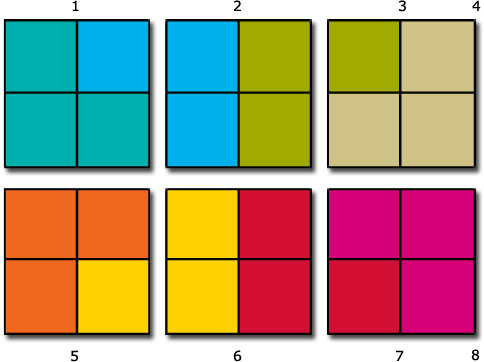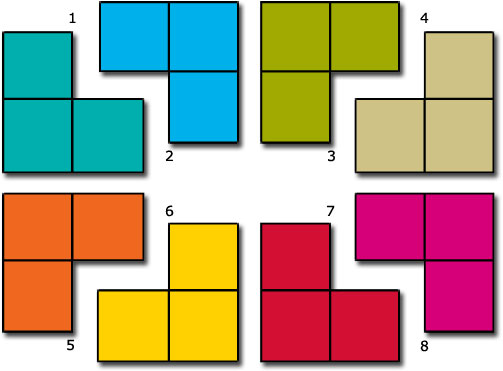3.13 More division with fractions
How about other fractions? What is 6 ÷ ? This means how many are there in 6? Consider six squares, divided into quarters, and count how many groups of three quarters there are.
Activity 51

Answer

Three quarters is 3 × . So dividing by is the same as dividing by 3 and by . Dividing by is multiplying by 4. So dividing by is the same as dividing by 3 and multiplying by 4, which is multiplying by . So 6 ÷ = 6 × = = 8.
The general rule for dividing by a fraction can be stated as follows.
To divide by a fraction, turn the fraction upside down and multiply.
Does this also work for dividing by ? Yes, because multiplying by n is the same as multiplying by . It also works for division of whole numbers: dividing by 4 (= ) is the same as multiplying by .
Example 23
Evaluate:
Answer
Using the rule above,
This is
(divide top and bottom by 3).
Alternatively divide top and bottom by 3 by cancelling by 3 to give
So .
Turning a fraction upside down is called finding its reciprocal.
The reciprocal of is . The reciprocal of is , i.e. 6.
So an alternative formulation of the rule for dividing by a number can be stated as follows.
Division by a number is the same as multiplication by its reciprocal.
